Exterior decoration of a frame house: how to choose the right option?
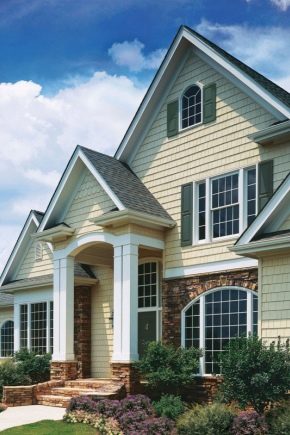
Frame construction is becoming more and more popular every year. Houses of this type are in no way inferior to log houses, they are just as warm, strong and durable. And their main advantage is a large selection of materials for facade finishing. Each of them has its own characteristics. Some can be installed by hand, while others require a more professional approach. Consider the varieties of natural and synthetic materials for outdoor cladding, their pros and cons.
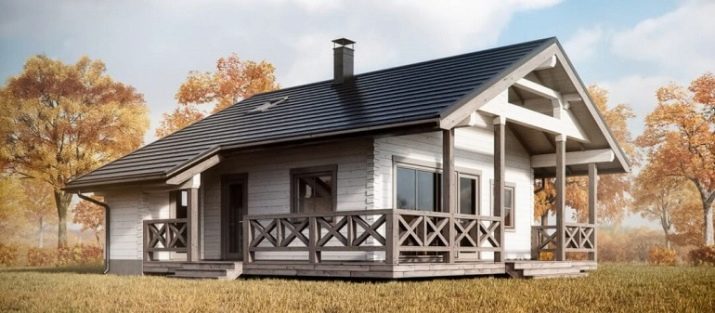

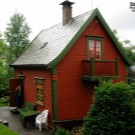
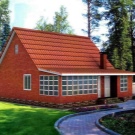
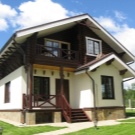
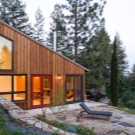
Features of buildings
High-quality facade finishing plays an important role in the construction of frame houses. Not only the external design of the house depends on the chosen material, but also its resistance to external environmental factors. This is due to the fact that the wood used in the construction of walls quickly absorbs moisture. Therefore, without an external covering, the service life of the building is noticeably reduced.
The timber frame is a load-bearing base that distributes the load through structures such as posts, beams, rafters, crossbars, etc. The foundation in such houses, as a rule, is columnar or pile, and they are characterized by slight subsidence of structures.
Wood is a fairly flexible material, which can lead to distortions and curvatures in the geometry of the building. Therefore, the cladding material must be flexible enough so that the coating remains intact when shrinking.
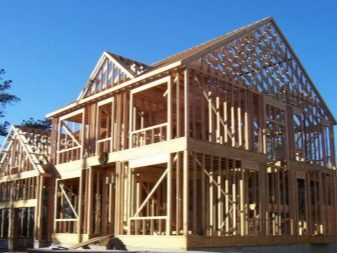

Requirements for external design
Despite the fact that frame structures are good for a variety of finishes, there are certain requirements for the choice of material. One of the main disadvantages of timber structures is poor heat retention. And if a metal was chosen as the base, heat loss will become an even greater problem. This is worth considering.
The selected structures must reliably protect the walls of the house and the roof from wind, precipitation, temperature extremes. Most modern materials also have excellent sound and noise insulation qualities, which is important both for buildings located within the city limits and for country houses.
First of all, it is necessary to select the facing material based on its technical characteristics. However, the chosen material should also be in harmony with other elements of the building and fit well into the exterior of the site.
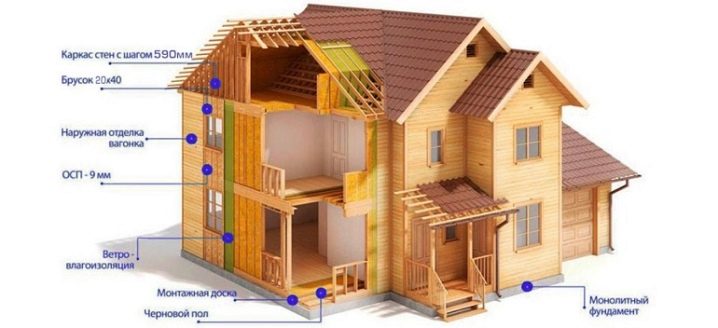
Types of materials
Slab materials
DSP (cement-bonded) and OSB (oriented-strand) boards are needed not so much for decoration as for strengthening the walls. Today they can be called the most popular among analogue materials.
The panels are made of glued wood shavings and chips. Their peculiarity lies in the fact that the fibers in the outer layers are located longitudinally, and inside - transversely. As an adhesive, synthetic-based resins and wax are used, thanks to which the boards are not afraid of moisture. Facing the facade with plasterboard is an equally successful option. The end result will be no worse than the previous one.
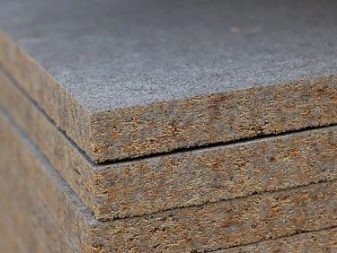

OSB or DSP panels are a high-quality and budget option that can give the facade structure strength and reliability.The panels are low-combustible materials, they do not ignite, do not smoke and do not spread flames. They are also resistant to mold, able to withstand minor mechanical damage and are not afraid of insects.
Siding
It is no less common material, loved by customers due to its ease of installation, durability and aesthetic appearance. The material is included in the list of inexpensive, but at the same time it has excellent technical characteristics.
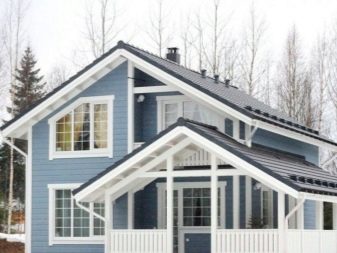
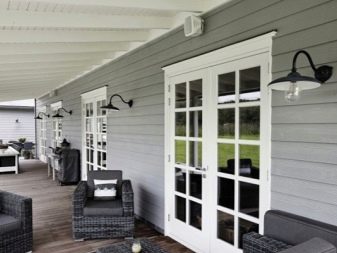
There are plastic, vinyl, metal and PVC siding. Decorating the outer walls of a building with plastic siding is not a problem. It is easy to install and is suitable for cladding single-storey and multi-storey buildings, therefore it is often used to decorate the facades of municipal and private buildings. The disadvantages of this material include a low level of strength. It is easy to break it with one blow or a sharp, careless movement.
The metal version is considered more durable. It has all the advantages of plastic material, and it also has a chic palette of colors. Of the minuses, it can be noted that it easily lends itself to rust and makes noise when it rains. Typically, metal siding is coated with polymer on top. This helps to extend the life of the material and, accordingly, the entire house.
Siding is subject to staining. You can also purchase ready-made colored material.
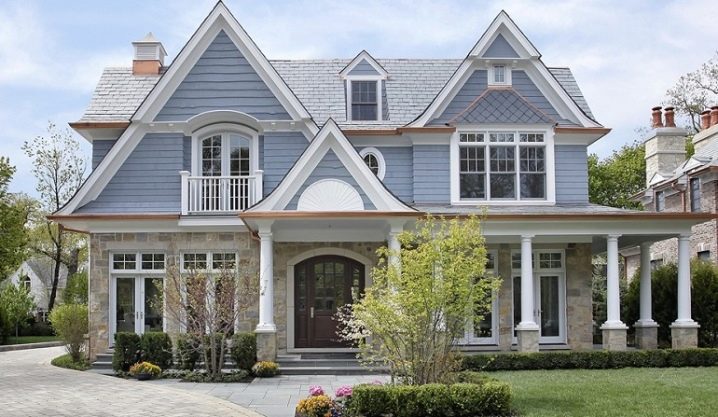
Block house
The block house is a beautiful imitation of a log. From a distance, it will seem that the house is really built from solid wood. Only a professional can guess that the surface of the wall is wooden only from the outside.
The block house is an environmentally friendly building material. It is considered one of the varieties of wagon-type boards and looks like a log. A heat-insulating mineral wool insulation is hidden inside. That is why the block house is recognized as a high-tech material.
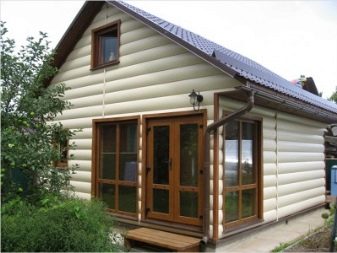
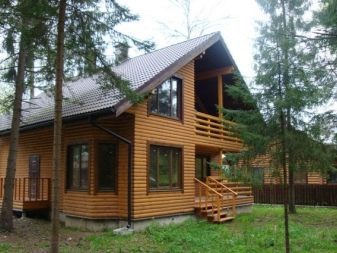
It is not difficult to sheathe the outside of the building with such material. Thanks to the convenient tongue-and-groove fastening system, the panels fit snugly together. And if necessary, any damaged element can be replaced.
If you plan to build a durable facility, the material will need protection from getting wet. Usually a block house is folded under the roof and treated with a special impregnation against decay.
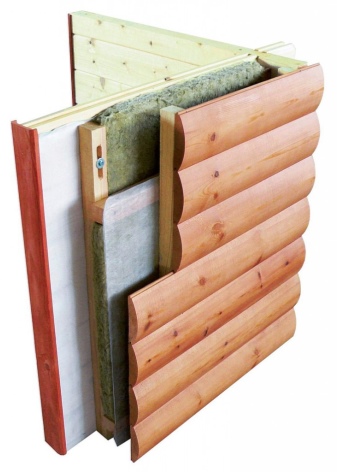
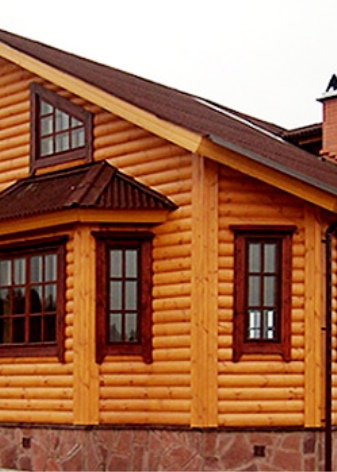
Clinker tiles
Single fired tiles are used for cladding. It has not lost its popularity for decades. This is due to the excellent appearance and performance of the material. Clinker is similar to traditional tiles, but at the same time it has increased frost resistance, although it is thinner than conventional ceramics.
Modern manufacturers offer a wide range of tiles. The variety of shapes and colors allows you to choose the best option for any design.
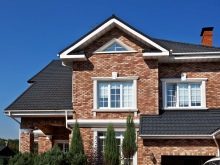
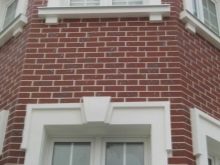

Suspended structures
Thermal panels are used as hinged structures. This is a special material with an interlayer. As a rule, the panels are installed on a metal frame, and the space between the wall and the decorative panel is sealed with a special insulation. Most consumer reviews talk about the simplicity and ease of laying curtain structures.
Many people choose this particular option, since they are 100% sure of its high technical performance. The use of panels helps to solve the problem of sound insulation, and the exterior of the building will look strict and neat. There are two types of hinged structures: ventilated and non-ventilated.
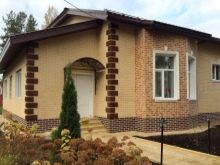

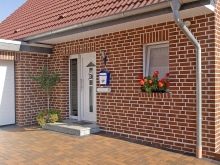
Natural and artificial stone
These materials are referred to as more expensive methods of cladding frame buildings. Due to the high cost of natural raw materials and its complexity in installation, such a finish is rare. The most affordable option is laying artificial stone.
The material is made in the form of small slabs of natural chips and resin, the texture of which exactly imitates the pattern of a stone.With its help, you can make masonry, which from afar is almost impossible to distinguish from natural.
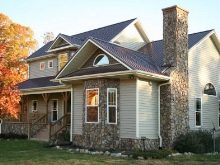
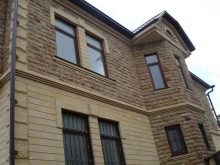

Facade brick
This material is presented in three types:
- silicate;
- ceramic;
- hyper-compressed.
Silicate brick will be the cheapest, but ceramic cladding will look more "elegant" and solemn. The brick can be solid and hollow. The second option has excellent energy-saving features, so it is more often chosen for facade decoration.

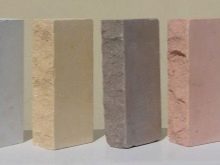
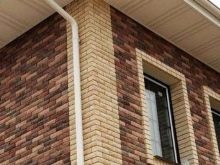
Brick cannot be called an unpretentious material. Laying should be carried out only during the warm season. And before carrying out work, it is worthwhile to accurately calculate the amount of material, since the color of the new batch may differ from the color of the previous one.
Plastering and painting
This type of exterior cladding is not suitable for long-term use. As a rule, plywood or OSB panels need plastering, which are then still covered with a more durable material.
Plastering is necessary to protect panels or walls from getting wet. Therefore, the finishing stage of finishing is painting the walls over the plaster. It should be noted that even a high-quality paint does not give a long-term effect. After 3-4 years, the cladding will begin to crack, the coating will need to be repaired.

Wet cladding
Wet cladding in frame construction is used along with additional insulation with foam plates. When choosing, it is important not to confuse exterior cladding boards with interior cladding materials. The required panels for external wall decoration are marked with the letter "f".
When installing the foam, the plates are glued joint to joint. For their better adhesion to the primer, the surface is treated with abrasive paper. After the material is fixed, a special glue is applied to its surface, into which the fiberglass mesh is “embedded”. After that, the entire material is covered with a sand-based quartz primer and plaster is applied.

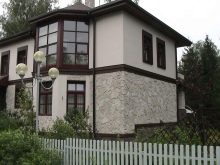
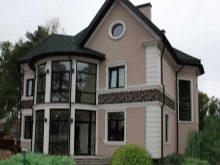
Selection criteria
There are many options for wall cladding. Correctly selected material is a guarantee of the durability and comfort of the frame building.
The choice depends on several factors:
- budget;
- the climate of the region;
- insulation material of a frame house.
The budget that the owner of the building has is an individual factor. However, it should be borne in mind that the most expensive material is not always the most effective and practical. For example, if you want to achieve a luxurious look of the facade, you can revet the house with a block house. However, this material requires some maintenance. Once every few years, the coating must be treated with special antiseptics and paints and varnishes. Otherwise, the tree will lose its beauty and strength. Nevertheless, despite the exacting maintenance, a block house will cost much more than siding.

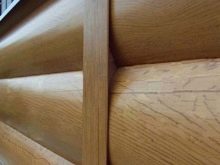
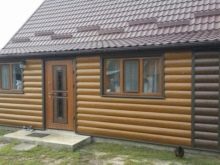
The climate of the region influences the choice of material to a greater extent than any other factor. For wet and rainy areas, wood cladding will not be the best option. In cold conditions, you should avoid using metal siding, preferring natural materials.
If mineral wool was chosen as a heater, then finishing can only be carried out with tiled material. Options such as plastering or painting are no longer suitable. It is better to give preference to siding, block house, lining. And if the insulation was carried out using foam, then the plaster can be applied directly to the sheets.
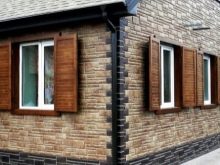
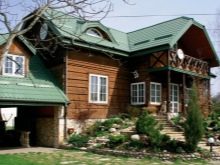
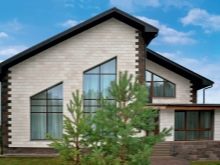
Interesting examples
- Facing the facade of a frame house with siding is one of the most popular options today. A wide range of colors allows you to choose the optimal shade for every occasion. The most popular are light and dark brown, olive, gray, beige shades.
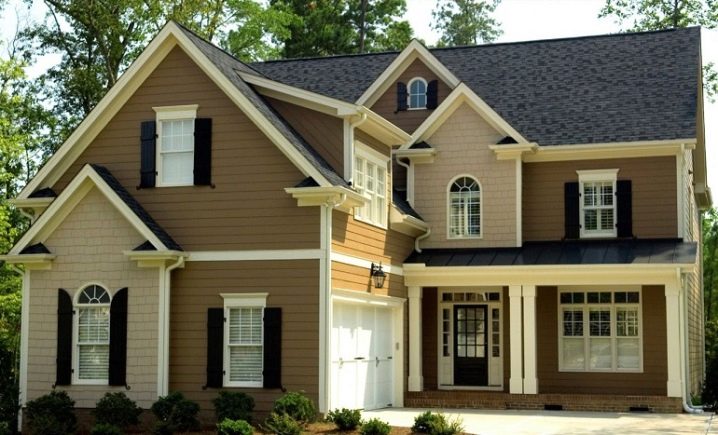
- Making any building look like a luxury mansion is easy - a block house always looks amazing.The only drawback is that the interior decoration of the house must be appropriate.
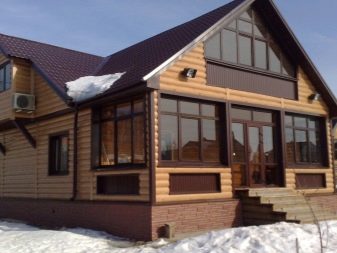
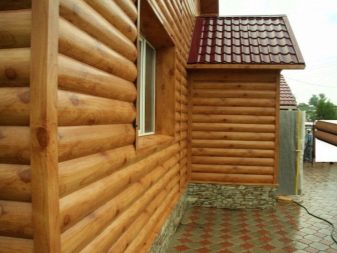
- Brick is another option for a beautiful facade design. Among the many design options, combinations of contrasting shades are especially popular.
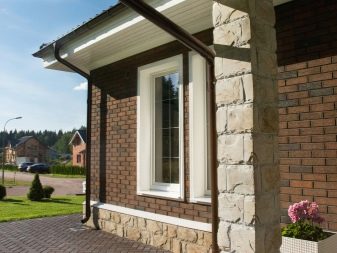
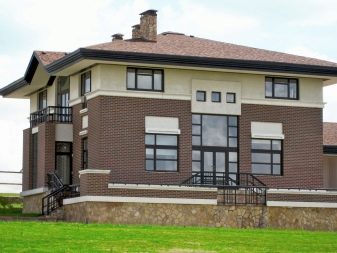
- To make the facade of the house original, you can use DSP slabs. This is a great way to experiment with design.
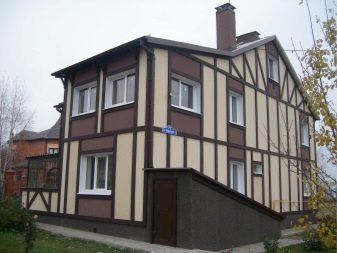
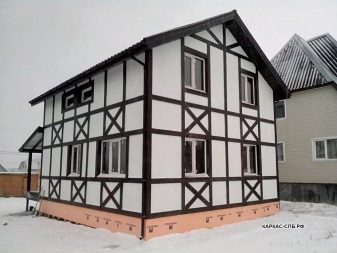
In this video, you will find a master class on cladding the facade of a house with clinker tiles.













The comment was sent successfully.